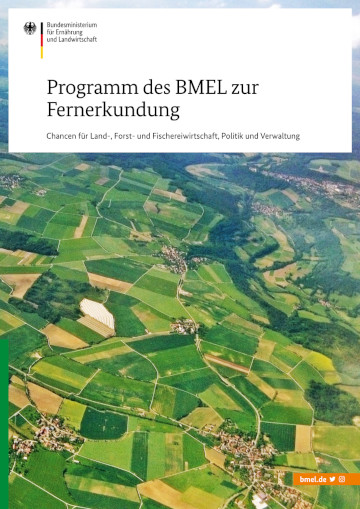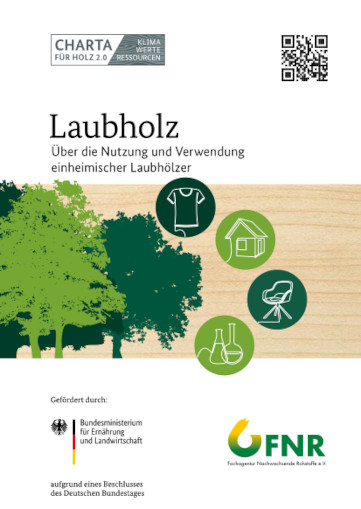Climate change mitigation, forests and use of wood
Climate change mitigation is a global challenge and a political priority.
Katowice Declaration on Forests: The UN Climate Change Conference underlines the role of forests and wood
On 12.12.2018, at the UN Climate Conference in Katowice, the international community agreed on a comprehensive Declaration on Forests. It emphasises that the 2°C target cannot be achieved without forests and the increased use of wood.
Sustainable forest management can preserve forests and their immense carbon sink and at the same time replace fossil resources and energy sources with wood, which is supplied by nature through the annual growth of trees.
In Germany, for example, national total emissions would be 14 percent higher without the contribution of forests and the use of timber.
In the tropics, the protection of forests against ongoing deforestation and destruction is a top priority. However, 90 percent of the wood used is needed as fuelwood for the population for cooking and heating, so that sustainable use concepts are also needed in these countries.
The BMEL encourages the exchange of know-how on forest management by funding many projects.
In contrast to local environmental problems, climate impacts (both positive and negative) are effective regardless of the sector and region of the world in which they are achieved. Without the contribution of forests worldwide, global warming cannot be stopped. The Intergovernmental Panel on Climate Change has identified sustainable forest management as one of the most cost-effective climate action measures.
What role do forests and wood play in climate change mitigation?
Forests and wood-based products are part of the natural carbon cycle. Around 1169 million tonnes of carbon are stored long-term in the biomass of sustainably managed forests in Germany. It was calculated that German forests sequester another 40 million tonnes of carbon dioxide every year due to the increment of forest trees. A further 4 million tonnes of carbon dioxide per year are sequestered long-term in the wood products that are harvested and processed, e.g. in furniture and housing construction.
In addition to that, forests and wood reinforce this positive impact on the climate due to the so-called substitution effect, which results in emissions avoided.
- On the one hand, less energy is needed to manufacture wood-based products (for instance furniture or building components) than to produce comparable products from other materials.
- On the other hand, wood as a power source, for instance in pellet-fuelled heating systems, can replace fossil energy sources.
Studies by the European Forest Institute (EFI) indicate that, at EU level, carbon dioxide emissions could be reduced by another 400 million tonnes annually in the forestry sector if specific incentive schemes were in place. This means that forests, including timber use, could achieve a climate impact equivalent to 22 percent of the EU's current total CO2 emissions.
A prerequisite for realising this potential is that forests continue to be managed in a sustainable manner, taking into account all their protective, productive and social functions. This must be taken into account when weighing up future forest policies in Germany, also in view of the 5.6 per cent of German forests that are currently already no longer used for forestry purposes, e.g. that are part of nature reserves or national parks.
The climate change impact of forests in the European framework for climate change
Climate change mitigation is one of the European Union’s political priorities. As early as 2009, the EU heads of state and government set the target of reducing greenhouse gas emissions by 80 to 95 percent by 2050 compared with 1990 levels. The greenhouse gas reduction target for the EU economy as a whole envisages a reduction of 40 percent by 2030 compared with 1990 emission levels. The land use, land-use change and forestry (LULUCF) sector is also to be included in the climate action framework by 2030.
Forests and forest management (through wood products) sequester over eleven percent of total EU emissions each year. Sustainably managed forests in the EU therefore have an important role to play in achieving the 2030 EU climate targets and the Paris Climate Agreement’s long-term goal of climate neutrality. In December 2017, the Council of EU Member States and the EU Parliament therefore agreed on a comprehensive regulation (the LULUCF Regulation), which recognises the central role of EU forests and soils in achieving the Paris Climate Agreement’s long-term goal. The regulation creates new incentives for additional efforts in climate change mitigation, for example through the increased material use of wood from sustainable forestry in construction, in everyday life and in completely new areas of application. The BMEL has initiated the Charter for Wood Promotion 2.0 as an important forum for dialogue in Germany in this field.
Forests in the Paris Climate Agreement
In 2015, a climate agreement, binding under international law, with the long-term goal of achieving a climate-neutral global economy in the second half of this century, was concluded in Paris.
It provides a long-term and reliable operational framework for policy makers, industry and society representatives. In terms of content, the Paris Climate Agreement also includes elements relating to forests such as reducing deforestation, sustainable forest management and the recognition of wood and wood based products as additional carbon sinks or substitutes for fossil resources. For the first time, all contributions to climate change mitigation related to forests and wood as a resource were recognised in an agreement that applies to all countries on the planet. The Climate Agreement calls upon the Parties to preserve and expand the positive climate impact of forests, sustainable forest management and wood use (in the "climate language": carbon sinks and reservoirs).
The climate impact of forests outside Europe
The clearing and destruction of forests, especially in the tropics, is second only to the energy sector with regard to human-made greenhouse gases in the atmosphere. Since total global emissions have risen in recent years, the calculated share of emissions generated by non-sustainable forestry practices has fallen in recent years from just under 20 percent to a current level of 12 percent. This 12 percent of global carbon dioxide emissions could be avoided through sustainable forest management. To this end, it is necessary to create respective framework conditions and incentives benefiting forest conservation and going far beyond financial aids. "Protection through use" is key here. This does not mean excluding all forest areas from all uses. Rather, forest management must safeguard all ecological, social and economic functions of forests as fundamental landscape features – also in the tropics. In addition, forests contribute to food and income security, especially among the poorer rural population, and make an important contribution towards the supply with timber, an essential resource for the future both at global and local level. The aim must be to stop ongoing deforestation, in particular with regard to natural forests, driven by the desire to use the land for more economically attractive land uses, e.g. for soy, palm oil or cattle farming. In this context, supporting settlers and smallholders near forests, for instance by securing land-tenure rights, is of particular importance.















